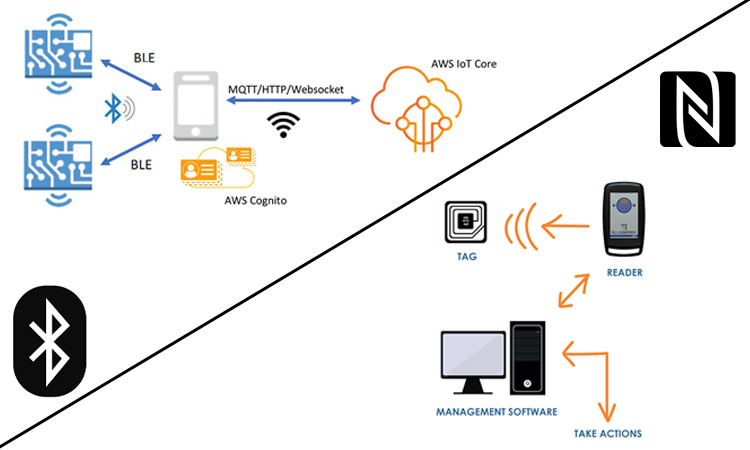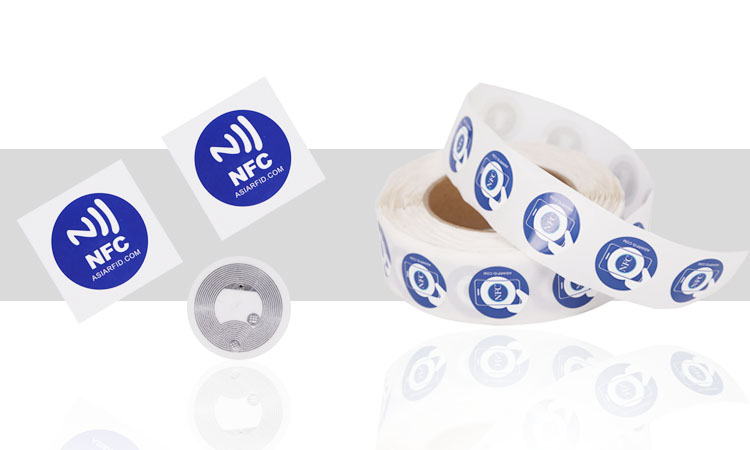Инвентарные теги важны, потому что они позволяют быстро и точно отслеживать и управлять запасами. Используя теги, предприятия и организации могут легко увидеть, сколько определенного продукта у них есть на складе, где он находится и когда он последний раз обновлялся. Эта информация имеет решающее значение для обеспечения точности уровней запасов и доступности продуктов, когда это необходимо. Кроме того, инвентарные метки могут помочь компаниям сэкономить время и деньги, уменьшив потребность в ручном подсчете и отслеживании запасов. Используя теги, предприятия могут автоматизировать многие процессы управления запасами и сосредоточиться на других важных задачах. В этой статье рассматриваются определения, типы и предлагаются ценные советы по использованию меток Inventory для оптимального управления запасами. Итак, давайте погрузимся!
Инвентарные бирки, также известные как инвентарные этикетки или инвентарные наклейки, представляют собой физические маркеры или этикетки, прикрепленные к предметам или единицам хранения. Они предоставляют ключевую информацию о запасах, такую как номера SKU (единицы хранения), описания, количество, местонахождение и другие важные сведения. Инвентарные этикетки играют решающую роль в организации, отслеживании и эффективном управлении запасами. Они классифицируют и идентифицируют элементы на основе определенных критериев, обеспечивая быстрый и точный поиск.
Метки сохраняют четкий контрольный журнал, уменьшая количество ошибок и обеспечивая эффективный контроль запасов. Общие сведения, которые можно найти на инвентарных этикетках, включают номера SKU, описания, количество и информацию о ценах. Информация о местоположении помогает упростить процессы подбора и пополнения запасов. Метки со штрих-кодом или QR-кодом позволяют осуществлять цифровое отслеживание, исключая ручной ввод данных. Теги срока действия отображают даты истечения срока действия, сводя к минимуму отходы. Инвентарные этикетки повышают эффективность и наглядность, а также предотвращают усадку. Внедрение стандартизированных систем маркировки и использование инвентарных меток оптимизирует управление запасами, оптимизирует операции и облегчает принятие обоснованных решений.
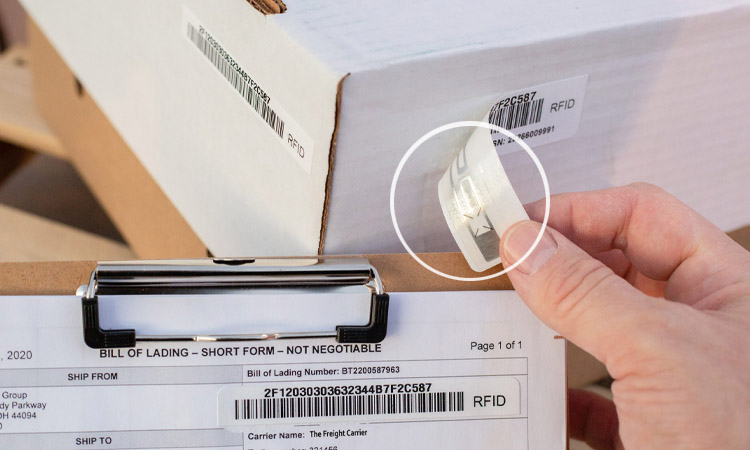
Доступны различные типы тегов инвентаризации, каждый из которых служит определенной цели в процессе управления запасами. Вот некоторые часто используемые стикеры инвентаря:
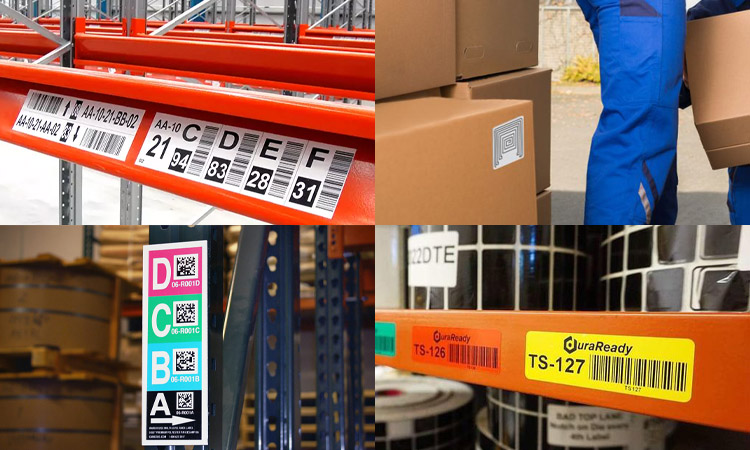
- Артикул Теги: Артикул (Складской отдел) теги широко используются в управлении запасами. В них содержатся уникальные идентификаторы для каждого продукта или предмета в инвентаре бизнеса. Теги SKU помогают идентифицировать и отслеживать отдельные товары, упрощая управление уровнями запасов и отслеживание движения запасов.
- RFID-метки: Метки радиочастотной идентификации (RFID) это инвентарные бирки, которые используют радиоволны для передачи информации о предмете. Метки RFID можно считывать с помощью считывателя RFID, что позволяет отслеживать предметы инвентаря без необходимости прямой видимости.
- Теги местоположения: Теги местоположения используются для идентификации и отслеживания физического местоположения запасов на складе или складе. Эти теги предоставляют информацию о конкретном проходе, полке или ячейке, где хранится товар. Используя теги местоположения, предприятия могут оптимизировать процессы комплектования и пополнения запасов, сокращая время поиска и повышая эффективность работы.
- Теги штрих-кода: Метки штрих-кода состоят из символы штрих-кода которые можно сканировать с помощью сканера штрих-кода или мобильного устройства с приложением для сканирования штрих-кода. Штрих-код содержит закодированную информацию о продукте, такую как номер SKU или другие важные данные. Теги со штрих-кодом позволяют быстро и точно вводить данные, повышая точность инвентаризации и ускоряя процессы отслеживания запасов.
- предотвратить потери и обеспечить надлежащую ротацию запасов для минимизации потерь.
- Серийные этикетки: Эти этикетки включают уникальный серийный номер, присвоенный каждому элементу инвентаря. Вы можете использовать серийный номер для идентификации и отслеживания предмета в системе инвентаризации.
- Теги истечения срока действия: Теги срока годности используются для товаров с ограниченным сроком годности, таких как скоропортящиеся товары или продукты со сроком годности. Эти теги отображают дату истечения срока действия, позволяя компаниям расставлять приоритеты при продаже или использовании предметов в зависимости от их статуса истечения срока действия. Метки истечения срока действия помогают предотвратить потери и обеспечивают надлежащую ротацию запасов для минимизации потерь.
- Ценники: Ценники обычно используются в розничной торговле для отображения продажной цены товаров. Эти теги могут включать название продукта, описание и цену в заметном и легко читаемом формате. Ценники упрощают процесс продаж, предоставляя покупателям четкую информацию о ценах и облегчая установление точных цен в точке продажи.
- Настраиваемые теги: Настраиваемые теги универсальны и могут быть адаптированы для удовлетворения конкретных бизнес-требований. Они позволяют предприятиям включать различные типы информации, такие как логотипы компаний, специальные инструкции, дополнительные сведения о продукте или рекламные сообщения. Настраиваемые теги обеспечивают гибкость при передаче конкретной информации об инвентаре.
Независимо от типа тега, который вы используете, важно то, что он обеспечивает надежный и точный способ идентификации и отслеживания ваших предметов инвентаря.
Как работает тег управления запасами?
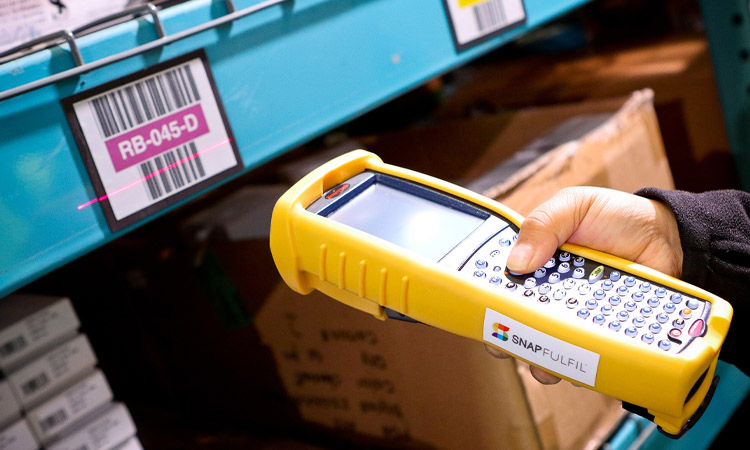
Тег управления запасами — это ярлык или ярлык, прикрепленный к элементу в инвентаре, чтобы помочь идентифицировать и отслеживать его. Тег обычно включает такую информацию, как название предмета, описание, количество, местонахождение и другие важные сведения. Когда вы добавляете предмет в свой инвентарь, к нему прикрепляются теги. Информация о этикетке синхронно вводится в систему управления запасами. Это позволяет легко отслеживать товар и находить его в инвентаре.
Когда элементы инвентаря перемещаются или продаются, информация на метке обновляется в системе управления запасами, чтобы отразить изменение. Это позволяет предприятиям точно отслеживать уровни своих запасов, отслеживать движение товаров и обеспечивать правильный подсчет товаров.
В некоторых случаях метки управления запасами могут также включать дополнительные функции, такие как штрих-коды или технология RFID, чтобы упростить быстрое и точное отслеживание и определение местонахождения предметов запасов. Эти метки можно считывать с помощью сканера штрих-кода или считывателя RFID, что позволяет автоматически вводить информацию о метке в систему управления запасами.
Зачем мне нужны инвентарные этикетки?

Метки запасов являются важной частью управления запасами, поскольку они позволяют идентифицировать и отслеживать элементы запасов. Без инвентарных этикеток может быть сложно или невозможно точно отслеживать перемещение и местонахождение товаров, что приводит к таким проблемам, как затоваривание, нехватка запасов, а также потерянные или неуместные предметы.
Этикетки инвентаря помогают компаниям отслеживать уровни своих запасов и обеспечивают легкость обнаружения и подсчета товаров. Они также облегчают проведение инвентаризационных аудитов и других видов инвентаризационных проверок, которые важны для обеспечения точности и целостности системы управления запасами. Кроме того, инвентарные этикетки могут помочь повысить эффективность и производительность, упрощая и ускоряя идентификацию и отслеживание элементов инвентаря. В целом, инвентарные этикетки являются важным инструментом для эффективного управления запасами.
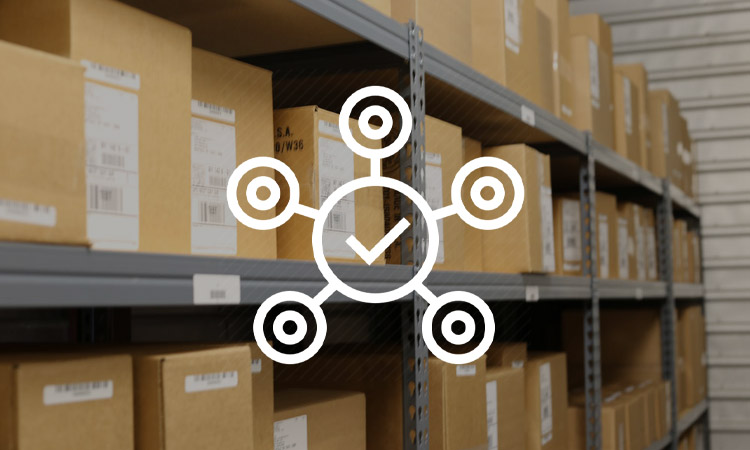
Есть несколько преимуществ использования наклеек Inventory для управления запасами. Некоторые из основных преимуществ включают в себя:
- Повышенная точность: инвентарные наклейки могут помочь предприятиям и организациям отслеживать уровни запасов и управлять ими. Это важно для обеспечения того, чтобы продукты были доступны, когда это необходимо, и чтобы уровни запасов были точными.
- Экономия времени и средств. Используя этикетки Inventory, предприятия могут автоматизировать многие процессы управления запасами, экономя время и деньги. Это может высвободить сотрудников, чтобы они могли сосредоточиться на других важных задачах, и может помочь компаниям сократить потребность в ручном подсчете и отслеживании запасов.
- Улучшенная видимость: инвентарные наклейки могут дать компаниям представление об уровне их запасов в режиме реального времени, позволяя им видеть, сколько определенного продукта у них есть на складе, где он находится и когда он последний раз обновлялся. Это может помочь предприятиям принимать более обоснованные решения в отношении своих запасов и улучшить общее управление цепочками поставок.
- Повышение эффективности: инвентарные теги могут помочь предприятиям оптимизировать процессы управления запасами и сократить количество возникающих ошибок. Используя теги, предприятия могут сократить время и усилия, необходимые для управления своими запасами, что делает их операции более эффективными и рентабельными.
В целом, инвентарные наклейки могут предоставить множество преимуществ для предприятий и организаций, которые используют их для управления своим инвентарем. Используя теги, предприятия могут повысить точность инвентаризации, сэкономить время и деньги и повысить общую эффективность.
Статьи по Теме: 11 лучших практик управления запасами

Штрих-коды и RFID-метки имеют свои преимущества и недостатки. Штрих-коды — это машиночитаемые оптические этикетки, содержащие информацию об объекте, к которому они прикреплены. Они недороги, просты в использовании и широко доступны, что делает их популярным выбором для управления запасами. Однако они имеют ограниченное пространство для хранения, поэтому могут хранить лишь небольшой объем информации.
С другой стороны, RFID-метки используют радиочастотную технологию для передачи информации об объекте. Они имеют больший объем памяти, чем штрих-коды, поэтому могут хранить больше информации. Они также более долговечны и могут считываться с большего расстояния, что делает их хорошим выбором для отслеживания предметов в суровых условиях или на больших расстояниях. Однако они дороже штрих-кодов и требуют специального оборудования для считывания.
В конечном итоге выбор между штрих-кодами и RFID-метками будет зависеть от конкретных потребностей и предпочтений компании или организации, использующей их. Некоторые предприятия могут найти штрих-коды лучшим выбором для своих нужд, в то время как другие могут предпочесть метки RFID. Перед принятием решения важно тщательно рассмотреть преимущества и недостатки обоих вариантов.
Чтобы максимально эффективно использовать теги инвентаря и обеспечить их эффективное использование в управлении запасами, примите во внимание следующие советы:
- Последовательная система тегов: Установите стандартизированную систему тегов для всего вашего инвентаря. Используйте согласованные форматы, правила маркировки и размещение тегов, чтобы обеспечить единообразие и простоту идентификации. Эта согласованность упростит ваши процессы инвентаризации и уменьшит путаницу.
- Четкая и читаемая информация: Убедитесь, что информация на бирках четкая, разборчивая и легко читаемая. Используйте шрифты, цвета и размеры меток, обеспечивающие достаточную видимость. Включите важные сведения, такие как номера SKU, описания, количество и любую другую соответствующую информацию, которая поможет быстро и точно идентифицировать.
- Интеграция штрих-кода: Если вы используете метки со штрих-кодом, интегрируйте их с технологией сканирования штрих-кода. Эта интеграция обеспечивает более быстрый и точный сбор данных, снижает количество ошибок при ручном вводе данных и повышает общую эффективность отслеживания запасов и управления ими.
- Регулярное обслуживание тегов: Периодически проверяйте и поддерживайте бирки инвентаря. Проверьте наличие повреждений, выцветания или неразборчивости и при необходимости замените бирки. Регулярное техническое обслуживание гарантирует, что метки остаются в хорошем состоянии и продолжают эффективно служить своей цели.
- Размещение тегов и безопасность: Надежно прикрепите бирки к предметам или единицам хранения, чтобы предотвратить случайное отсоединение. Убедитесь, что теги размещены последовательно на каждом элементе для удобства просмотра и поиска. Для дорогостоящих или подверженных краже предметов рассмотрите возможность использования ярлыков с защитой от несанкционированного доступа или дополнительных мер безопасности, чтобы предотвратить кражу и защитить свой инвентарь.
- Обучение и общение: Обеспечьте надлежащее обучение вашего персонала важности инвентарных этикеток и тому, как их эффективно использовать. Убедитесь, что все, кто участвует в процессе управления запасами, понимают систему маркировки, ее назначение и значение точной информации о маркировке. Эффективное общение и обучение сведут к минимуму ошибки и будут способствовать последовательному использованию тегов инвентаризации.
- Регулярные проверки и обновления: Проводите регулярные инвентаризационные проверки для проверки точности информации о метках и выявления любых несоответствий. Используйте эти аудиты как возможность обновить или скорректировать информацию о тегах по мере необходимости. Эта практика помогает вести точные записи инвентаризации и гарантирует, что теги отражают текущее состояние инвентаря.
- Интеграция с системами управления запасами: Интегрируйте свои инвентарные этикетки с надежной системой управления запасами или программным обеспечением. Эта интеграция обеспечивает бесшовную синхронизацию данных, автоматизирует отслеживание запасов и обеспечивает видимость уровней запасов в режиме реального времени, сокращая объем ручных операций и повышая общую точность.
Статьи по Теме: Руководство для начинающих по считывателям RFID-карт и их использованию
В целом, использование наклеек инвентаря включает в себя следующее:
- Прикрепление тегов к предметам инвентаря.
- Ввод информации с меток в систему управления запасами.
- Использование информации в системе для мониторинга и управления уровнями запасов.
Существует несколько способов удаления меток управления запасами, в зависимости от типа метки и прикрепленного материала. Вот несколько возможных методов:
- Если бирка прикреплена к одежде или другим предметам из ткани, ее часто можно снять, обрезав нити, удерживающие ее, ножницами.
- Если бирка прикреплена к твердой поверхности, например к коробке или предмету мебели, ее часто можно удалить с помощью источника тепла, например фена или тепловой пушки, чтобы смягчить клей. Как только клей размякнет, вы можете аккуратно снять бирку с помощью ножа или скребка.
- Если бирка прикреплена к металлической поверхности, иногда ее можно удалить с помощью сильнодействующего растворителя, такого как ацетон или растворитель для краски, чтобы растворить клей.
- Если бирка прикреплена к защитному устройству, такому как булавка или проволока, может потребоваться использование специальных инструментов, таких как плоскогубцы или кусачки, чтобы удалить ее, не повредив предмет.
Важно внимательно следовать инструкциям на бирке или проконсультироваться со специалистом, если вы не знаете, как снять ее безопасно и не повредив предмет.
Статьи по Теме:
Теги инвентаря используются в различных настройках для отслеживания и управления запасами. Вот некоторые распространенные варианты использования ярлыков инвентаря:
- Розничные магазины используйте теги инвентаря, чтобы отслеживать количество и местонахождение продуктов на их полках.
- Склады и распределительные центры используют инвентарные этикетки для отслеживания движения товаров и обеспечения точности уровней запасов.
- Производственные предприятия используют инвентарные наклейки для отслеживания движения сырья, компонентов и готовой продукции на протяжении всего производственного процесса.
- Больницы и другие медицинские учреждения используют инвентарные метки для отслеживания местонахождения и использования медицинских принадлежностей и оборудования.
- Государственные учреждения и другие организации используют метки Inventory для отслеживания движения активов, таких как транспортные средства и оборудование.
В целом, инвентарные этикетки важны для управления запасами и обеспечения точного отслеживания и инвентаризации продуктов и активов.
Инвентарные теги — это ярлыки, прикрепленные к предметам в инвентаре для их идентификации и отслеживания. Предприятия часто используют эти теги для управления и контроля своих запасов и могут предоставлять важную информацию о товаре, такую как его название, количество, местонахождение или срок годности.
Инвентарные этикетки могут быть изготовлены из бумаги, пластика или других материалов. Они могут быть прикреплены к предмету различными способами, например, с помощью клея, веревки или защитного устройства. Вот несколько примеров ярлыков инвентаря:
- Бирка на коробке с продуктами, содержащая название продукта, количество и дату истечения срока годности.
- Бирка на поддоне с товарами, содержащая название товара, количество и местонахождение на складе.
- Бирка на инструменте, содержащая серийный номер, номер модели и дату покупки.
- Бирка на оборудовании, содержащая график технического обслуживания и любые предупреждения о безопасности.
- Бирка на контейнере с опасными материалами, содержащая химическое название, количество и инструкции по обращению.
Инвентарные метки часто используются на складах, фабриках и других складских объектах, чтобы помочь предприятиям отслеживать свои запасы и гарантировать, что у них есть нужные продукты, когда это необходимо.
-
Q1: Что такое теги запасов и как они используются в управлении запасами?
A1: Инвентарные теги — это физические этикетки или теги, которые прикрепляются к предметам в инвентаре для их идентификации и отслеживания. Они используются в управлении запасами для повышения точности и эффективности контроля уровня запасов, местоположения и движения.
-
Q2: Как этикетки для отслеживания могут повысить точность и эффективность управления запасами?
A2: Этикетки отслеживания могут повысить точность и эффективность управления запасами, отслеживая уровни запасов, местоположение и движение. Это может помочь предотвратить дефицит, уменьшить затоваривание и улучшить общий контроль запасов.
-
Q3: Как можно интегрировать инвентарные метки с другими технологиями, такими как искусственный интеллект и машинное обучение, для улучшения управления запасами?
О3. Метки запасов можно интегрировать с другими технологиями, такими как искусственный интеллект и машинное обучение, для улучшения управления запасами за счет прогнозной аналитики, автоматизированного принятия решений и расширенных возможностей анализа данных. Это может помочь повысить точность и эффективность управления запасами и снизить затраты.
-
Q4: Безопасны ли наклейки инвентаря?
A4: В целом, стикеры инвентаря безопасны в использовании. Как правило, они изготовлены из прочных материалов и безопасны в обращении. Тем не менее всегда рекомендуется следовать любым инструкциям по технике безопасности или мерам предосторожности, которые предоставляет производитель, чтобы обеспечить безопасное использование любого продукта.
-
Q5: Какие крупные компании используют метки Inventory?
A5: Многие крупные компании используют метки Inventory для отслеживания своих запасов и активов. Примерами крупных компаний, которые могут использовать метки Inventory, являются розничные торговцы, производители, склады и логистические компании. Эти компании часто имеют большое количество товаров, которые необходимо точно отслеживать и управлять ими, и инвентарные этикетки могут помочь им сделать это эффективно и действенно.
-
Q6: Где я могу приобрести инвентарные этикетки?
A6: Вы можете приобрести инвентарные этикетки из различных источников, включая магазины канцелярских товаров, магазины промышленных товаров и интернет-магазины. Некоторые компании, специализирующиеся на решениях для управления запасами, могут также предлагать инвентарные этикетки как часть своей линейки продуктов. Это хорошая идея, чтобы делать покупки по лучшей цене и качеству для ваших нужд. Вы также можете узнать у производителя вашей системы управления запасами, предлагают ли они совместимые этикетки.
-
Вопрос 7. Как инвентарные бирки помогают предотвратить сокращение запасов?
A7: Инвентарные бирки служат сдерживающим фактором для кражи, указывая на то, что инвентарь контролируется. Во время аудита наличие тегов помогает выявить отсутствующие элементы или несоответствия, что позволяет принять незамедлительные меры. Это помогает предотвратить сокращение запасов и защищает прибыльность бизнеса.
-
Q8: Можно ли настроить теги инвентаря?
A8: Да, теги инвентаря можно настроить в соответствии с конкретными бизнес-требованиями. Они могут включать логотипы компаний, специальные инструкции, дополнительные сведения о продукте или рекламные сообщения. Настраиваемые теги обеспечивают гибкость при передаче конкретной информации об инвентаре.
-
Q9: Как часто следует поддерживать инвентарные теги?
A9: Инвентарные бирки следует регулярно проверять и поддерживать в рабочем состоянии. Проверьте наличие повреждений, выцветания или неразборчивости и при необходимости замените бирки. Регулярное техническое обслуживание гарантирует, что метки остаются в хорошем состоянии и продолжают эффективно служить своей цели.
-
Q10: Можно ли интегрировать теги инвентаризации с системами управления запасами?
A10: Да, теги инвентаризации можно интегрировать с системами управления запасами или программным обеспечением. Эта интеграция обеспечивает беспрепятственную синхронизацию данных, автоматизирует отслеживание запасов и обеспечивает видимость уровней запасов в режиме реального времени. Это снижает объем ручного труда и повышает точность управления запасами.




